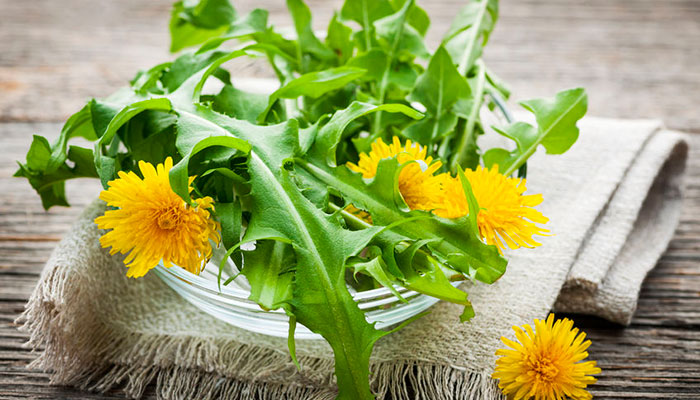
You have probably been told time and again to pick dandelion greens early because the tender young plants will not be bitter. Well, they will be bitter, just less bitter than after the buds open. The youngest of plants will still be bitter because the leaves contain sesquiterpenes, which is a milky substance that flows through the veins of the plants, a substance that is classified as a chemical.
You can reduce the impact by picking the plants early or by picking plants that have received plenty of water. Well-watered plants grow more rapidly, thus reducing the amount of the bitter chemical. Dry plants will have a higher concentrate because they take longer to develop, and the same applies to older plants because they are more developed.
Dandelions greens can be prepared in various ways to reduce the bitterness, and to add flavor to the meal. Greens boiled to mush will be unappetizing and as a standalone dish will be hard to pass off as a meal. In a survival situation, however, prepare them any way you can, and even eat raw to gain the nutritional value, and they do have nutritional value.
A half a cup of dandelion greens, for example, contains more calcium than a glass of whole milk and the same half-cup is loaded with iron, more iron than spinach in fact. Additionally, dandelion greens contain Vitamin C, and more Vitamin A than carrots and the ever-important Vitamin K, potassium, folic acid and magnesium.
There are plenty of health and survival reasons to eat dandelion greens, but who wants to feel like they are being punished when they sit down to a meal by having to eat the greens.
Pick them whenever you want, because you will not get away from the bitterness, and while you are at it, dig up the roots and save for tea, which is quite healthy for you or cook the roots and flowers together for a tasty dish at any meal.
Once you have the leaves picked, soak them in cold salt water for 10 minutes to keep them crisp and to run off any insect stragglers that be lurking on the leaves. Rinse and pat dry, and if the leaves wilt before you can get them in a salad, for example, just run them under some cold water to firm them back up.
Mix the leaves in with any other greens to make a salad and add your favorite dressing. Early spring greens are wonderful with oil and vinegar dressing. Vinegar, in particular, cider vinegar will help counter the bitterness, as will lemon juice and other acidic fruit juices or dressings.
Many people like to make a wilted salad by pouring hot bacon grease over the greens. You can even add hardboiled eggs, bacon bits, and/or cooked and chilled kidney, white or black beans to the salad.
People used to, and probably still do, boil their greens several times in fresh water to leach the bitter chemical from the leaves, but what kind of a meal does that leave you. A green pile of mush is what it leaves you. They are, of course, still good this way, however visually unappealing they may be.
If you do boil your greens, add some bacon or salt pork and serve with a splash of vinegar or fresh squeezed lemon juice and just a sprinkle of sugar.
Fat enhances the flavor of any greens so don’t be afraid of using bacon grease, certain cooking oils, and butter when cooking and serving.